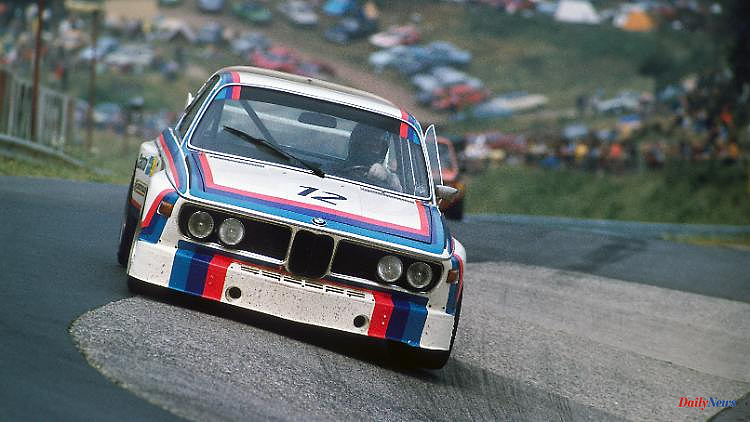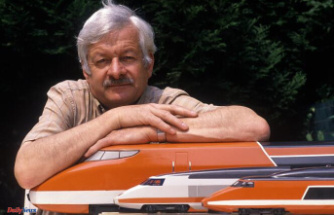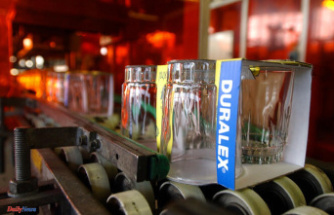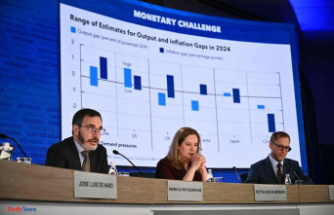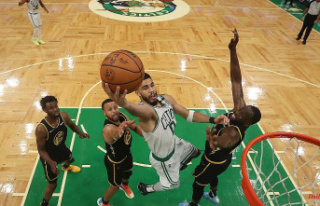It was the courage to pursue niche athletes that made BMW grow in the 1960s. But there should be more to it, thought the people in Munich, and in 1972 they founded Motorsport GmbH, which has developed a wild pack of furious driving machines to this day.
Just as the color Rosso Corsa gets Ferraristi's pulse racing, the letter M has been unleashing the adrenaline of BMW fans for 50 years now. At that time, when other premium players still left the role of arsonist to tuners à la AMG, BMW launched the first touring cars with top-class racing technology via the newly founded in-house Motorsport GmbH. A wild pack that stirred up rallying as a pocket rocket in 2002, while the aggressive look of the 2002 turbo Autobahnraser was even a topic of discussion in the Bundestag and the large 3.0 CSL coupé started a winning streak on circuits that culminated early on in winning the European Touring Car Championship in 1973 .
"Batmobile" posters of the BMW 3.0 CSL, decorated with gigantic wings and spoilers, adorned children's rooms - until 1978, when the ultra-flat V12 hunter BMW M1 came along. This legendary Bavarian with Lamborghini genes and 24 valves under the hood made the BMW advertisers forget their usual understatement: "Building first-class automobiles is a science. Unique ones are an art. Now there is an automobile that is both: the new BMW M1". Since then it's been one after the other with the beefy M535i (1980), brute M5 (1984) and wiry M3 (1986) until almost the entire band from M1 to M8 was covered. Today, the BMW M brand has long been a subscriber to pole position, as the global market leader for high-performance cars. The harmonious mix of motorsport enthusiasts and wolves in sheep's clothing makes it possible.
The three men who launched Projekt Motorsport GmbH into orbit in 1972 already had dynamism in their genes and thus established the BMW brand as a major player in the small club of manufacturers of high-performance cars. While Munich was preparing to host the Olympic Games at the time, BMW boss Eberhard von Kuenheim turned everything upside down at the white and blue car manufacturer: new headquarters in the form of the new class four-cylinder, the first 5 Series with a numerical model name and the appointment of the passionate fighter jet pilot Robert A. Lutz to the Marketing Director with sporting ambitions.
Lutz came from Opel, where he had observed with suspicion the build-up of the RS division at arch-rival Ford. Meanwhile, Cologne Capri RSs were shaking up the touring car and rally scene, and even Porsche had to respect Ford as a racing power. BMW countered with the vigor of the Kuenheim and Lutz duo, who immediately installed BMW Motorsport GmbH and brought Jochen Neerpasch on board as the third man.
It was Neerpasch who had brought Ford RS to glory and now, as head of BMW Motorsport GmbH, he succeeded in attracting the most notable racing drivers of the day. Whether Chris Amon, Hans-Joachim Stuck, Dieter Quester, Björn Waldegaard or Toine Hezemans, they chased from success to success in BMW 2002 and from 1973 also in 3.0 CSL with the striking racing colors blue, violet and red on a white background. The 3.0 CSL won the European Touring Car Championship no less than six times in a row, and the road versions of this "Batmobile" - the spoilers were included in the trunk due to the lack of approval - claimed the left lane of the motorway. Batman's potential company car also made history as a work of art: in 1975, a 3.0 CSL designed by Alexander Calder surprised people at the 24 Hours of Le Mans.
However, the letter M only became known worldwide through a super sports car that even commanded respect from Ferrari. For this M1 project, BMW Motorsport GmbH allied itself with Lamborghini, as the Italians had unrivaled experience in the development of roadworthy racers. At first everything went according to plan: Giorgetto Giugiaro developed the sensationally flat design (1.10 meters) and BMW, after an initially projected and then discarded V8, developed a brand new 277 hp six-cylinder, the first with four-valve technology. In the motorsport version, it provided a full 470 hp, in any case enough power to make all rivals sweat.
However, even before series production started, Lamborghini ran into financial difficulties. Now it was improvised. Italian suppliers built the tubular space frame and plastic body for the M1 and delivered everything to Stuttgart to the coachbuilder Baur, who in turn installed the mechanics supplied by BMW. This delay resulted in the homologation series arriving too late for the M1's originally planned motorsport use. Only in the Procar series did the then most expensive and fastest German sports car (262 km/h or 310 km/h as a motorsport version) still score points. At the same time, the M1 shone as a driving machine, because when driving around corners, 1 g stood for the world's best lateral acceleration value. Incidentally, an M1 built in 1979, which pop artist Andy Warhol designed into a work of art, also remained unique.
The first wolves "in the gray flannel", as BMW called them, with which one could sprint from the office to the race track, were built by Motorsport GmbH in 1974 as the 530i, 533i and 535i. By 1980, almost 900 sedans with factory tuning were built. Then followed the M535i (E12) with 218 hp six-cylinder and in 1984 the first M5 (E28) made its debut. This 286 hp M5 sped to 100 km/h in 6.4 seconds - a world record for four-door models. Other world records were to follow: the M5 Touring (E34) from 1992 was the fastest station wagon, the M3 (from 1985) was stylized by the specialist media as the sports car of the century. The first M3 CSL (E46; "Coupé Sport Lightweight") raised the bar for the rival Mercedes C 55 AMG and Audi S4 on the Nordschleife and the third M5 (E60) with a ten-cylinder heart surpassed the 500 in 2004 as the first business jet -PS brand.
Since 1993, the Munich performance center has officially operated as M GmbH and from then on the product portfolio became even more colorful. The "M" gained recognition in the art scene with ever new art cars, with ultra-sharp roadster offshoots of the Z3 and Z4 with fresh air fans and with the models X5 M and X6 M launched in 2009, finally also with the performance-addicted SUV clientele. Back then, the 300,000. Dampfhammer left the Bavarian power forge and the sports show on the German market had become richer.
Power versions of Lexus, Cadillac, Jeep or Jaguar as well as four-door Porsche apparently made the BMW M models even more desirable. In any case, the sales figures for the M performers have been chasing records since the 2010s. Perhaps this is also due to the fact that BMW has now enriched almost every series with at least one powerful M racer, from the compact M135i to the BMW XM in full fat with 750 hp as the first independent M model since the M1.
M GmbH now delivers more than 160,000 units every year. So that M remains one of the most coveted letters in the automobile alphabet even after the gold anniversary, there are already Stromers like the i4 M50 that flash into the future.

